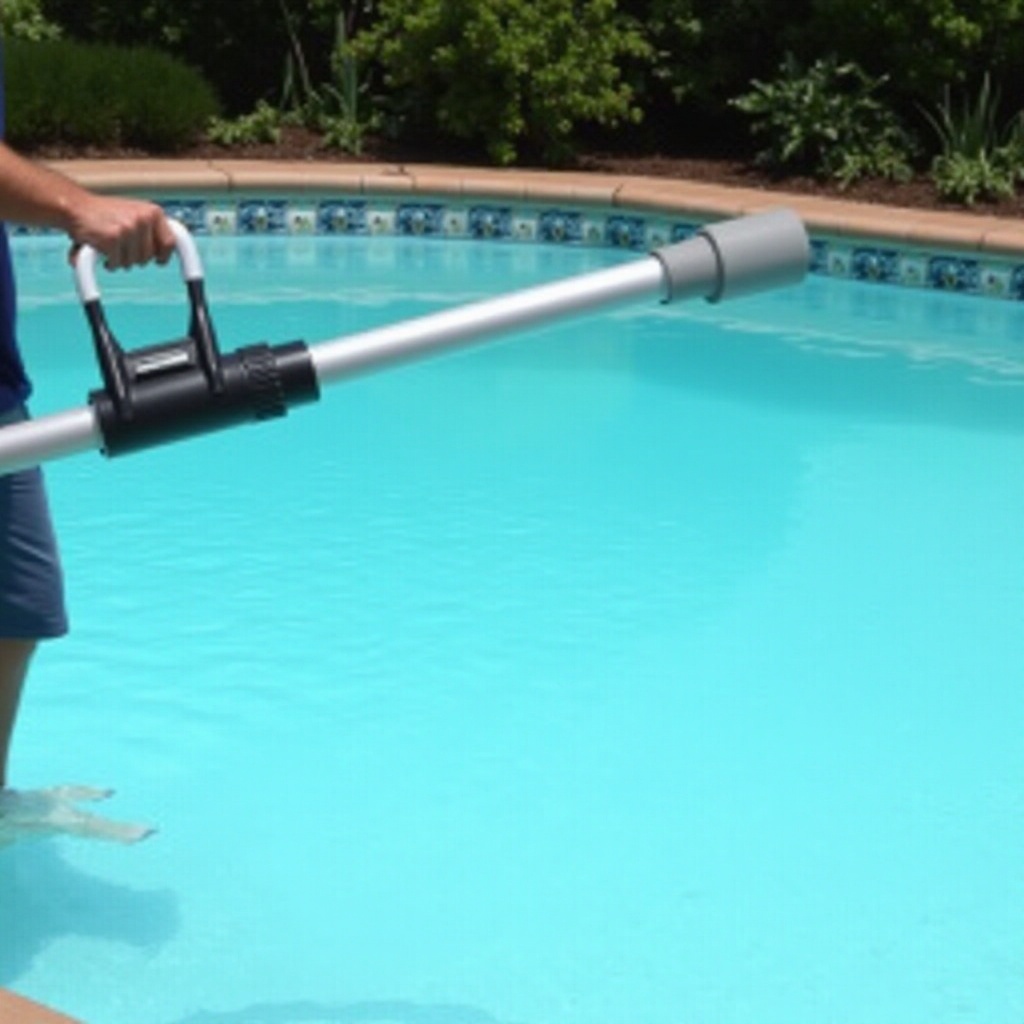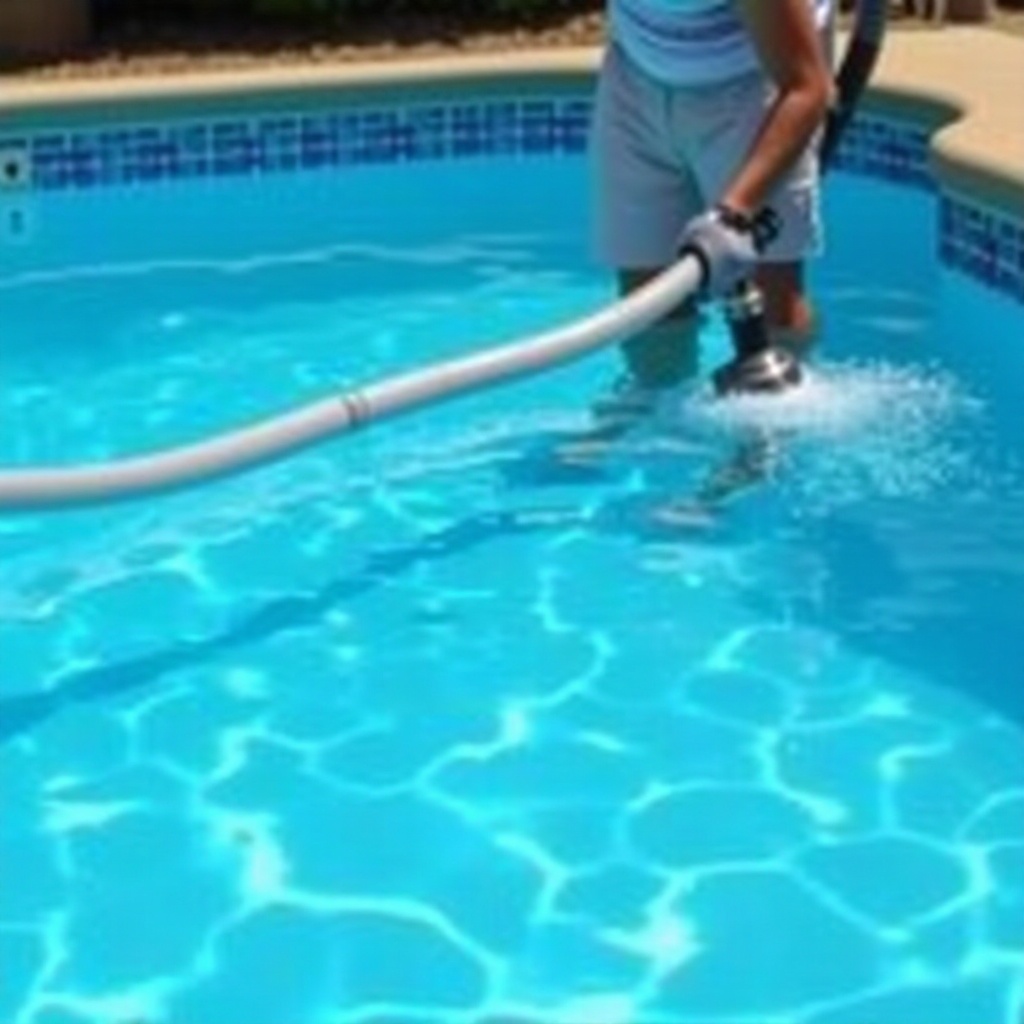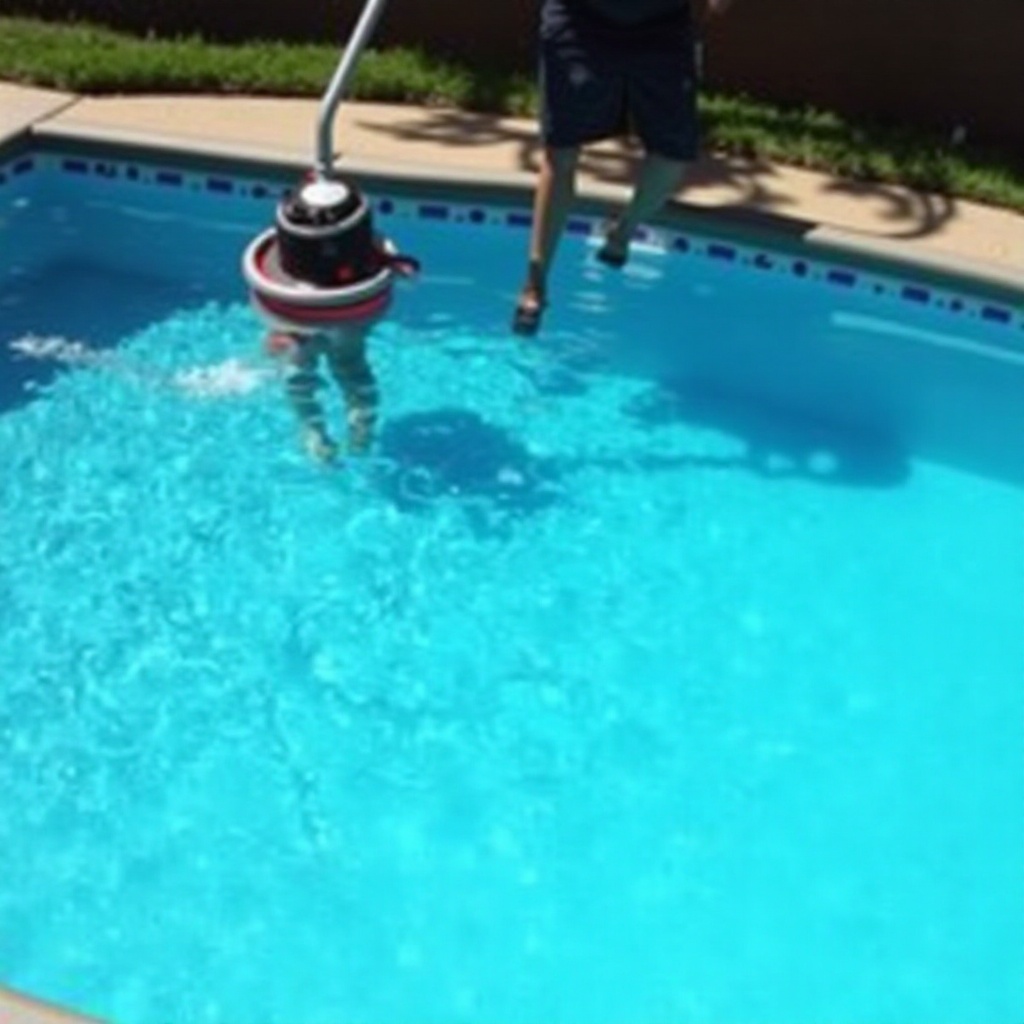Introduction
Vacuuming a swimming pool is essential to maintaining clean and safe water. A properly vacuumed pool not only looks inviting but also prevents the growth of algae and bacteria. Whether you have a manual or an automatic pool vacuum, knowing how to use it effectively can save you time and keep your pool in top shape. Let’s dive into the details of vacuuming your pool efficiently.

Types of Pool Vacuums
When it comes to pool vacuums, you have two main options: manual and automatic. Each type has its advantages and best use scenarios, and understanding these can help you choose the right one for your pool.
Manual Pool Vacuums
Manual pool vacuums require you to actively control the cleaning process. They typically consist of a vacuum head attached to a telescoping pole, with a hose connecting to your pool’s filtration system. These vacuums are great for targeting specific areas and giving you precise control over the cleaning process.
Automatic Pool Vacuums
Automatic pool vacuums operate independently, saving you time and effort. They come in different types, such as suction-side, pressure-side, and robotic. Suction-side and pressure-side vacuums connect to your pool’s existing filtration system, while robotic vacuums are self-contained units that operate on their own power source. These vacuums are perfect for regular maintenance and can efficiently clean the entire pool with minimal supervision.
Preparing Your Pool for Vacuuming
Before you begin vacuuming, it’s important to prepare your pool adequately. This preparation ensures that you get the best results and helps maintain your equipment.
- Skim the Surface: Remove leaves, bugs, and other debris from the pool’s surface using a skimmer net.
- Check the Water Level: Ensure that the water level is appropriate for vacuuming; it should be at mid-skimmer level.
- Inspect the Equipment: Check the vacuum head, hose, and telescoping pole for any damage or wear.
- Turn Off the Pool Pump: This will prevent debris from being circulated back into the pool while you vacuum.
By following these steps, you set the stage for an effective and hassle-free vacuuming session.
Step-by-Step Manual Pool Vacuuming Guide
Using a manual pool vacuum can be labor-intensive but gives you thorough control over the cleaning process. Here’s a detailed guide to help you master manual vacuuming.
Setting Up the Manual Vacuum
- Attach the vacuum head to the telescoping pole.
- Connect one end of the hose to the vacuum head.
Submerging and Connecting the Hose
- Lower the vacuum head to the pool floor.
- Feed the hose into the water, ensuring it fills entirely with water to avoid air pockets.
- Attach the other end of the hose to the skimmer’s suction port.
Vacuuming Techniques and Tips
- Move the vacuum head slowly across the pool floor in overlapping lines.
- Pay extra attention to corners and steps, as debris tends to accumulate in these areas.
- If suction is lost, check for air pockets in the hose and re-prime if necessary.
These techniques will help you achieve a spotless pool, ensuring a pleasant swimming experience.

Step-by-Step Automatic Pool Vacuuming Guide
Automatic pool vacuums simplify the cleaning process significantly. Let’s explore how to set up and optimize their performance.
Setting Up the Automatic Vacuum
- Assemble the vacuum according to the manufacturer’s instructions.
- Place the vacuum in the pool.
Optimizing the Cleaner’s Performance
- Adjust the vacuum settings to match your pool size and type.
- Ensure the hoses are free of tangles for smooth movement.
Post-Vacuum Routine
- Remove the vacuum from the pool and rinse it off to remove any clinging debris.
- Store it in a cool, dry place to prevent deterioration.
Automatic vacuums can make pool maintenance a breeze, provided you set them up correctly and maintain them regularly.
Troubleshooting Common Pool Vacuuming Problems
Despite careful preparation, you might encounter some issues while vacuuming your pool. Here are solutions to common problems:
- Loss of Suction: Check for air leaks in the hose and ensure all connections are tight.
- Vacuum Stuck on Debris: Turn off the vacuum, clear the debris, and restart.
- Hose Tangling: Ensure the hose is the proper length for your pool and untangle before use.
Addressing these issues promptly can help maintain the efficiency of your vacuum.

Maintenance of Pool Vacuum Equipment
Proper maintenance of your pool vacuum extends its lifespan and ensures optimal performance.
- Regular Cleaning: Rinse the vacuum head and hose after each use.
- Inspect for Wear: Check for cracks or wear on the vacuum head, hose, and attachments.
- Storage: Store the equipment in a protected area away from direct sunlight.
By following these maintenance steps, you ensure your pool vacuum remains in top condition for years to come.
Conclusion
Vacuuming a swimming pool is an essential task that ensures a clean and safe swimming environment. Whether using a manual or automatic vacuum, following the correct procedures and maintaining your equipment will keep your pool sparkling. A well-vacuumed pool enhances the swimming experience and promotes overall pool health.
Frequently Asked Questions
How often should I vacuum my pool?
It’s ideal to vacuum your pool at least once a week. However, this can vary based on usage, weather, and surrounding vegetation.
What should I do if my pool vacuum loses suction?
Check for air leaks in the hose, remove any blockages, and ensure all connections are snug.
Can I use my automatic pool vacuum year-round?
Yes, provided you maintain and properly store the vacuum to avoid damage during off-season months.


